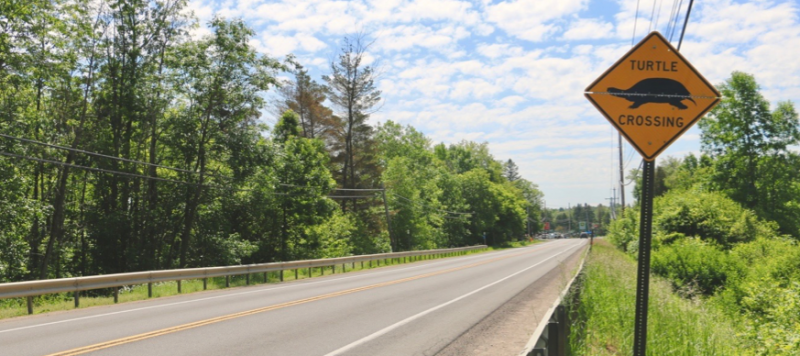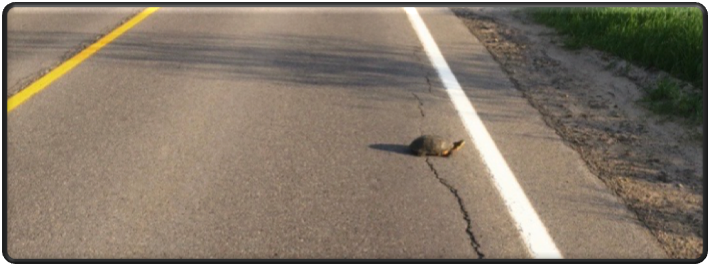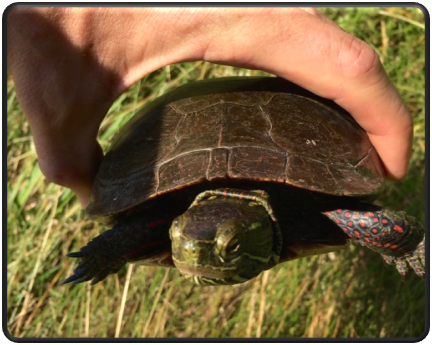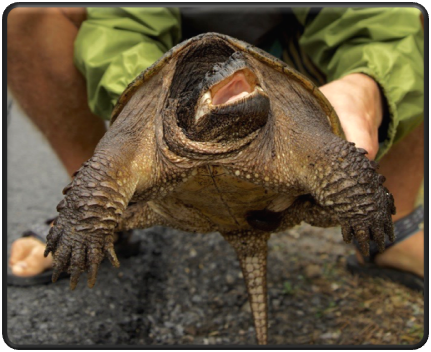
Why Did the Turtle Cross the Road?
...to get to the other side!
Many of us rely on crosswalks to safely navigate through bustling traffic, but wild animals are often not so lucky. Road kill is a major issue that continues to decrease animal abundance and biodiversity. While road signs are established for animal crossing in certain areas, there is no way to determine exactly when and where an animal will cross.
As summer progresses and weather gets warmer, one reptile in particular is on the move. Turtles are venturing across roads on a quest for new territory, breeding opportunities, nesting areas, and food. In most states across the country, at least one species of turtle is listed as threatened or endangered. In New York, these include the bog, mud, and Blanding's turtles. Ecologists believe these declining numbers are correlated to increasing traffic near turtle habitats. James Gibbs, a conservation biologist at the State University of New York in Syracuse (SUNY-ESF), estimates that some populations of turtles in the Northeast have suffered up to a 20% mortality rate due to traffic encounters.
Since observing this decline in turtle populations, conservation groups are working hard to promote population success. Luckily, you can help, too! If you see a turtle crossing the road, there are simple steps you can take to improve the success of turtles within ecosystems in your area.

Blanding's turtle crossing, County Route 25. Encounter by Emlyn Crocker.
1) Be Observant
Keep your eyes peeled in areas where turtles may be crossing. At this time of year, turtle traffic is increasing due to nesting. Individuals are moving from water to drier habitat and back. Because of shell appearance and leisurely pace, turtles may look like rocks or debris in the road. Pay attention to posted signs and warnings marking common crossing areas.
2) Safely Pull Over
Your safety matters just as much as the turtles’! Park safely on the side of the road and put your hazard lights on. Make sure traffic is clear and use caution when venturing onto a road to help a turtle.
3) Help the turtle cross
If a turtle is in danger of being struck by a car, you can choose to help it cross. Firmly grasp the turtle on both sides of its shell and carry it in the direction it is facing; it will attempt to recross if returned to the side of the road it started on. Carry the turtle several feet off the road, but do not relocate the turtle to a new habitat. Be careful not to drop the turtle and avoid unnecessary or excessive handling. Never grab a turtle by the tail; this can severely damage its spine.

Painted turtle, Canton. Encounter by Jacob Malcolm.
Use caution if you encounter a large snapping turtle. Snapping turtles can bite, so find a blunt object and gently coax them from behind. You can also grasp the rear of their shell on either side of their tail and place them on a car mat or cardboard to drag them to safety.

Snapping turtle, Potsdam. Encounter by Jake Van Deursen.
We are taught that traffic is dangerous. We learn to use crosswalks, look both ways before we cross the road, and assess the speed and distance of oncoming vehicles. Unaware of the fatality of traffic, turtles are simply attempting to meet their biological needs. As humans continue to fragment and disturb natural habitats, wild animals will require assistance as they interact with unfamiliar synthetic structures. Even if you avoid a turtle while driving, chances are that turtle will be struck by another vehicle. It is important to do what we can to ensure that when turtles do try to cross the road, they get to the other side!
Comments
Painted Turtle
Great post! On a drive back to SLU from a lab trip with my herpetology class we saw a painted turtle try to cross the road. We stopped and helped it get to the other side.


Whenever myself or my wife see a turtle crossing, we make sure to stop and help them get where they are going. She once lost a chunk of her favorite flip-flop to a snapper, but it was worth it!